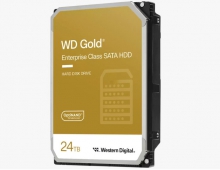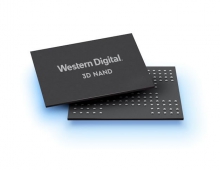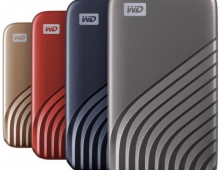
WD Demonstrated Heat Assisted Magnetic Recording Hard Drive Technology
WD demonstrated the heat assisted magnetic recording (HAMR) technology at the 2013 China (Ningbo) International Forum on Advanced Materials and Commercialization.
WD's vice president of technology, Dr. William Cain, gave his presentation, 'Magnetic Hard Disk Media: Enabling High Density Data Storage,' on a PC powered by a fully enabled WD HAMR 2.5-inch hard drive.
"Analysts predict 25 trillion gigabytes of new data will be generated by 2020 and that average household storage needs in the U.S. will require as much as 3.3 TB by 2016," said Dr. Cain. "This tremendous growth in data requires continued increases in storage capacity and performance for the cloud, big data and consumer technologies. WD is focused on hard drive innovations that will enable future storage capabilities, and HAMR technology is a key step in the migration path."
HAMR technology, created by Seagate, may offer a solution for increasing areal density (AD) by magnetically recording data on high-stability media using laser thermal assistance. The technology shrinks data bits in a stable manner by briefly heating the disk surface during magnetic head recording. The method can increase data density by a factor of more than 5 and ultimately results in storage capacities as great as 4 terabits per square inch.
WD is addressing the challenges associated with HAMR technology, including designing media that manages the increasing complexities of concurrently meeting magnetic, thermal and optical requirements; laser light path integration; and head-disk interface reliability and lifetime.
Seagate has said it will be able to produce a 60TB 3.5-in. hard drive by 2016. Laptop drives could reach 10TB to 20TB in the same time frame, according to IHS iSuppli.
"Analysts predict 25 trillion gigabytes of new data will be generated by 2020 and that average household storage needs in the U.S. will require as much as 3.3 TB by 2016," said Dr. Cain. "This tremendous growth in data requires continued increases in storage capacity and performance for the cloud, big data and consumer technologies. WD is focused on hard drive innovations that will enable future storage capabilities, and HAMR technology is a key step in the migration path."
HAMR technology, created by Seagate, may offer a solution for increasing areal density (AD) by magnetically recording data on high-stability media using laser thermal assistance. The technology shrinks data bits in a stable manner by briefly heating the disk surface during magnetic head recording. The method can increase data density by a factor of more than 5 and ultimately results in storage capacities as great as 4 terabits per square inch.
WD is addressing the challenges associated with HAMR technology, including designing media that manages the increasing complexities of concurrently meeting magnetic, thermal and optical requirements; laser light path integration; and head-disk interface reliability and lifetime.
Seagate has said it will be able to produce a 60TB 3.5-in. hard drive by 2016. Laptop drives could reach 10TB to 20TB in the same time frame, according to IHS iSuppli.





















